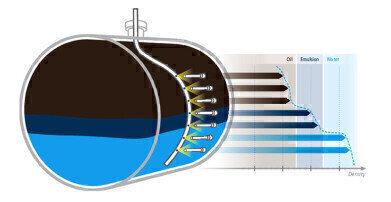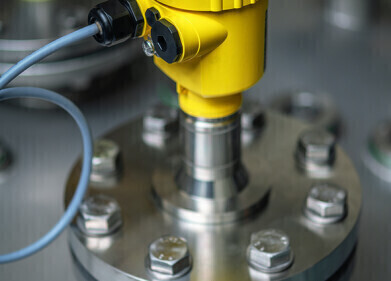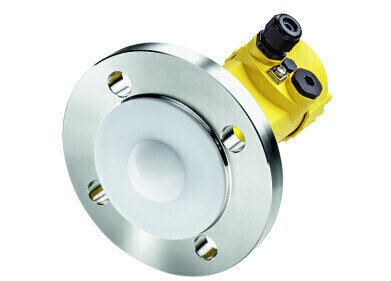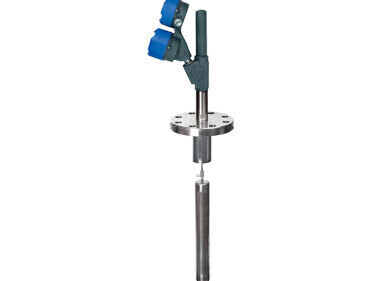Level measurement
Multiphase level measurements for optimal process control
Oct 28 2019
The monitoring of interfaces in process vessels can be very difficult due to extreme process conditions. Wherever other methods fail, a radiometric measurement method offers significant advantages. With Berthold's EmulsionSENS, interfaces can be reliably detected with the aid of a density profile and the processes dependent on them, can thus be optimally controlled.
The measurement of several phases, so-called multiphase levels, poses some challenges for the manufacturers of process measuring instruments. These include, in addition to the often not distinctly formed interfaces, the (sometimes only slightly) different phase densities. Wherever a "live image" of the highly complex separation process in a vessel is required to adapt certain process parameters, multiphase level measurements are used. These include for example, separators, storage tanks, desalters, and hydrocracker.
These diverse applications underline that multiphase level measurements are often used in processes operating under extreme conditions, which makes radiometric measurements indispensable. The measuring principle of radiometry is based on the attenuation of radiation when penetrating materials. The detector measures the radiation emanating from the radioactive source and attenuated by the material in the vessel, whereby the resulting signal can be assigned to a corresponding measured value, such as a density value, by means of a calibration. The process is almost independent of other process conditions, such as vessel size, buildups or installations in the vessel.
With Berthold's EmulsionSENS, the user has the opportunity to get a glimpse inside the process vessel and to monitor the interfaces formed therein. The EmulsionSENS multiphase level measurement system consists of a combination of high sensitivity scintillation detectors and low activity gamma sources located along the desired measurement range. Based on the principle of radiometry and a corresponding calibration, each detector delivers an individual local density value, which can be forwarded via HART signal to a process control system supplied by the customer and used to create a density profile over the entire measuring range. The figure shows schematically the measuring principle of EmulsionSENS for a desalter and the resulting density profile. By mounting the detectors on the outer wall of the vessel, these are easily accessible and adjustable. A one-time calibration of the system as part of the initial commissioning is sufficient, a recalibration is not required. Since neither mechanically moving parts are installed, nor do the sensors come in contact with the material to be measured, radiometric systems are wear-resistant and maintenance-free. Due to the curved dip tube, which is used to position the encapsulated sources, the length of the measurement path at each position is almost the same (<500 mm) and as much measured material as possible is recorded, allowing a representative measurement and imaging of the density profile. Both the long measuring path and the use of high-energy gamma sources (e.g. Cs-137) make the measuring process insensitive to buildups on the container wall and the dip tube. Because the shield is mounted on the vessel, the sources can be removed from the dip tube for example for maintenance work and stowed safely, so from the point of view of radiation protection, safe entry of the vessel can be guaranteed.
In addition, EmulsionSENS offers the possibility to connect an evaluation unit. Based on the created density profile, this unit uses internal algorithms to determine the position of the individual interfaces and provides these as 4 ... 20 mA current signals, in addition to the individual density values of the detectors. The evaluation unit not only offers the advantage of redundancy, but also displays the measured values in real time. Bar graphs and time histories of the phase densities enable the user to quickly gain an overview of his desalter, thus enabling the adaption of important control parameters (e.g. dwell time or chemical addition).
For the measurement of interfaces, radiometric measuring systems compared to other methods, such as capacity, differential pressure or radar measurements, offer some obvious benefits that justify the use of radioactive sources. In the chemical and petrochemical industries, aggressive atmospheres, high pressure, and extreme temperature processes require technology that can withstand these harsh conditions while delivering accurate results. Radiometric measuring systems impress and convince with their non-contact, reliable and robust operation. The measurement of interfaces under extreme conditions is therefore an ideal application example for radiometric measurement systems, such as Berthold's EmulsionSENS.
Digital Edition
PIN 25.6 Buyers' Guide
January 2025
Buyers' Guide Directory - Product Listings by Category - Suppliers Listings (A-Z) Articles Analytical Instrumentation - ASTM D7042: The Quantum Leap in Viscosity Testing Technology -...
View all digital editions
Events
SPE Hydraulic Fracturing Technology Conference and Exhibition
Feb 04 2025 The Woodlands, TX, USA
Feb 05 2025 Guangzhou, China
Trinidad and Tobago Energy Conference 2025
Feb 10 2025 Point Lisas, Trinidad
Feb 11 2025 Lagos, Nigeria
Feb 13 2025 Manama, Bahrain



















